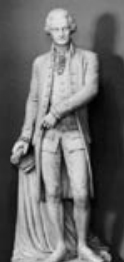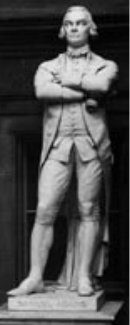In Balch Spring, Texas, senior citizens meeting at a community senior center were prohibited from praying over their meals. In Russellville, Kentucky, a library employee was barred from wearing her necklace because it had a small cross on it; and in Clymer, Pennsylvania, a school employee was suspended for wearing a necklace with a cross. Although states print hundreds of thousands of custom license plates plates ordered and purchased by individual citizens, Oregon refused to print “PRAY,” Virginia refused to print “GOD 4 US,” Vermont refused to print ROMANS5,” and Utah refused to print “THANK GOD,” claiming that such customized license plates violated the “separation of church and state.”
In cities in Texas, Indiana, Ohio, Georgia, and Nebraska, not only were citizens not permitted to hand out religious literature on public sidewalks or preach in public areas, but several were arrested for doing so. In Memphis, Tennessee, a library offered shelves for displaying community advertisements and announcements. When a local church placed a notification of its upcoming Christmas program and a small Nativity scene on the shelf, the library required the removal of Joseph, Mary, Jesus, and the Wise Men from the scene, leaving only the farm animals. In Eau Claire, Wisconsin, college students serving as residential assistants were prohibited from holding Bible studies in their own private dorm rooms, even though discussion groups on any other topic were permitted. In York, Pennsylvania, because a prosecuting attorney mentioned seven words from the Bible in the courtroom (a statement that lasted less than five seconds), a jury sentence was overturned for a man convicted of brutally clubbing to death a 71-year-old woman in order to steal her Social Security check. In the name of “separation of church and state,” courts and public officials have clearly imposed unreasonable restrictions on religious free speech across the general public sphere; and they have imposed even more egregious restrictions on students and education. For example: If students are given the latitude of creating artwork of their own choosing, it is unconstitutional for them to include a religious image in their artwork. JOKI v. BD. OF EDUC. OF THE SCHUYLERVILLE CENTRAL SCH. DIST., 1990; C. H. v. OLIVA, 2000; FLEMING v. JEFFERSON COUNTY SCH. DIST., 2002; PECK v. BALDWINSVILLE CENT.SCH. DIST., 2005 Student artwork containing religious symbols (such as a Bible or a cross) may be treated as gang symbols, profanity, and satanic signs. BANNON v. SCH. DIST. OF PALM BEACH COUNTY, 2004. David Barton - The wonder of worship. Apply it and you will never, ever be the same. How many of you have ever ridden a camel before? Will you please lift your hand?
0 Comments
Southern Democratic governors, fearing that Truman might eventually succeed in his civil rights goals, denounced his agenda and proposed a meeting in Florida of what they called a “southern conference of true Democrats” to plan their strategy to halt civil rights progress. That summer at the Democratic National Convention when Truman placed strong pro-civil rights language in the national Democratic platform, the result was a walkout of southern delegates. Southern Democrats then formed the Dixiecrat Party and ran South Carolina Democratic Governor Strom Thurmond as their candidate for President. Thurmond’s bid was unsuccessful. Truman was the first democratic president to make bold civil rights proposals democratic Gov. Strom Thurmond Truman’s civil rights efforts were significant; and the website for the Democratic National Committee properly acknowledges Truman’s important contributions. In fact, in their section called “A Brief History of the Democratic Party,” Democrats declare: “With the election of Harry Truman, Democrats began the fight to bring down the barriers of race and gender.” Notice the word “began.” That is an accurate description; starting with Harry Truman, Democrats began – that is, they made their first serious efforts – to fight against the barriers of race; yet, as already noted, Truman’s efforts were largely unsuccessful because of his own Democratic Party.
“Strom Thurmond and Tom Moss” Strom Thurmond Collection, Clemson University republican senator Strom Thurmond hired tom moss, the first African American to serve in the office of a southern senator the DNC website acknowledges that for democrats, it was Truman who began the change. Look a little more closely at the Democrats’ own history of their Party. On their official website, after noting that, “Thomas Jefferson founded the Democratic Party in 1792,” they list a number of years highlighting significant Democratic achievements: 1798, 1800, 1808, 1812, 1816, 1824, 1828, 1832, 1844, and 1848 – a long flurry of Democratic activity. Yet after 1848, what is the next date mentioned? It skips from 1848 to the beginning of the next century. Why would Democrats skip over their own history from 1848 to 1900? Perhaps because it’s not the kind of civil rights history they want to talk about – perhaps because it is not the kind of civil rights history they want to have on their website. The Democrat’s website is accurate when it says that the Democratic efforts for civil rights “began” with Truman in 1946, for there certainly is much about civil rights that they would rather not talk about before that time. The Democratic Party website conveniently omits nearly half-a-century of its history The President following Democrat Harry Truman was World War II hero Republican Dwight D. Eisenhower, elected in 1952. Eisenhower was well aware of the southern Democratic congressional commitment to racial segregation. Understanding that it would be difficult to make substantial changes in law, and that the progress would be slow at best, Eisenhower determined to eliminate racial discrimination in all areas under his authority. He therefore issued executive orders halting segregation in the District of Columbia and federal agencies. Furthermore, he was the first President to appoint a black American – Frederic Morrow – to an executive position on the White House staff; and although he also proposed a vigorous civil rights legislative protection plan for blacks in the southern Democratic States, Democrats in Congress were able to prevent any legislative progress. Given his pro-civil rights record, it is not surprising that in his 1956 reelection, Eisenhower – like Republican Presidents before him – received significant support from black voters. |


 RSS Feed
RSS Feed